

Blog
Our accessibility consultants are constantly on the lookout for new products that will make it easier for our clients to comply with accessibility criteria while meeting their overarching design goals.
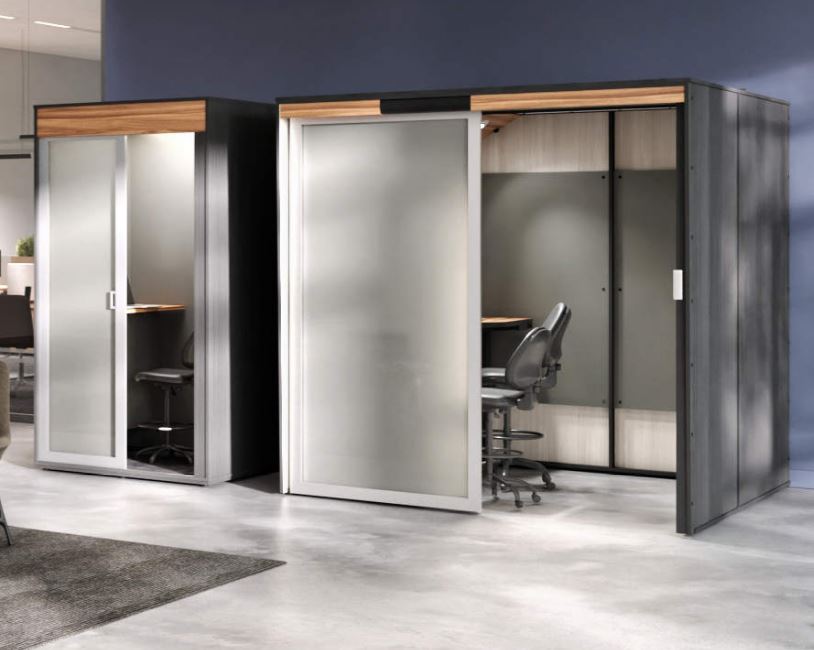
As manufacturers become more familiar with accessibility requirements under applicable federal, state, and local regulations and building codes, new or modified products continue to emerge, making compliance simpler and more stylish.
Here are just a few examples of accessible products that we have been recommending…

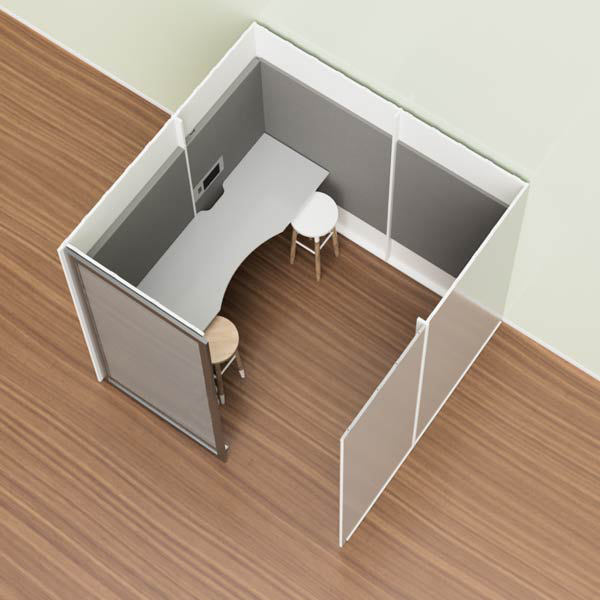
From coworking spaces in residential buildings and hotels, to office fit-outs, to transportation waiting areas, a modular phone booth or pod has become a common amenity. As with any other amenity, where these pods are utilized, an accessible option must also be provided. Often, the models on the market have a door that is too narrow, a threshold that is too high, and a lack of turning space or other required clearances within the pod.
One accessible option that we have come across is the TalkBox Studio. It comes equipped with an automatic sliding door, a smooth threshold transition, sufficient interior clearance, and an adjustable height desk to accommodate to the needs of the user.
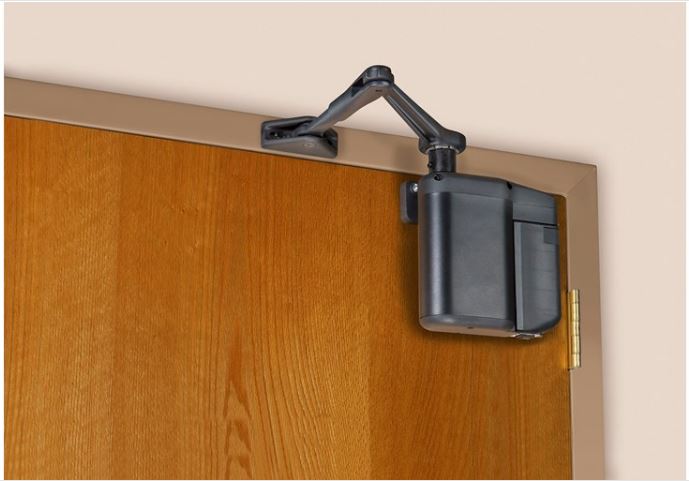
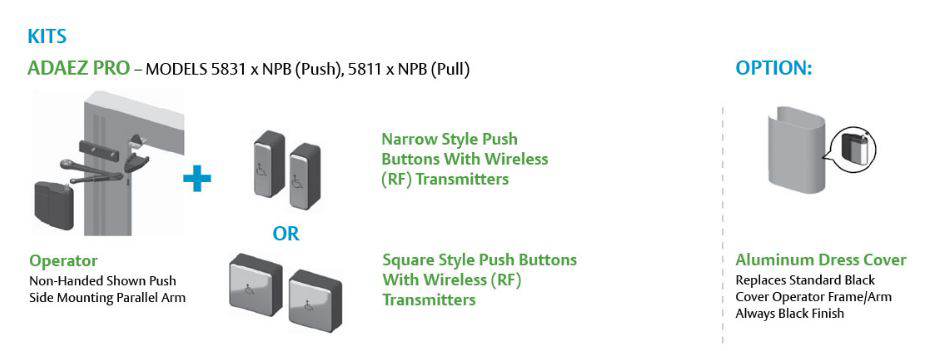
One of the most common remediations to address noncompliant clearances at doors along the accessible route is to install an automatic door opener. This can be an expensive and involved process, especially post-occupancy if the door in question is not already equipped to provide electrical power.
The 5800 from Norton Rixson is a regenerative, low-energy operator, meaning that the manual operation of the door charges the battery to power the automatic operation. It can also be plugged into a 110VAC outlet for additional power. The operator itself is low profile, allowing it to be installed at doors within tight spaces with options for either the pull or push side of the door.
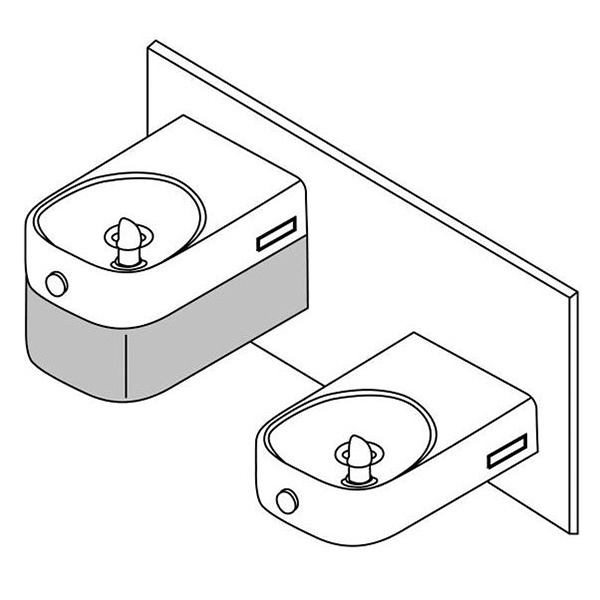
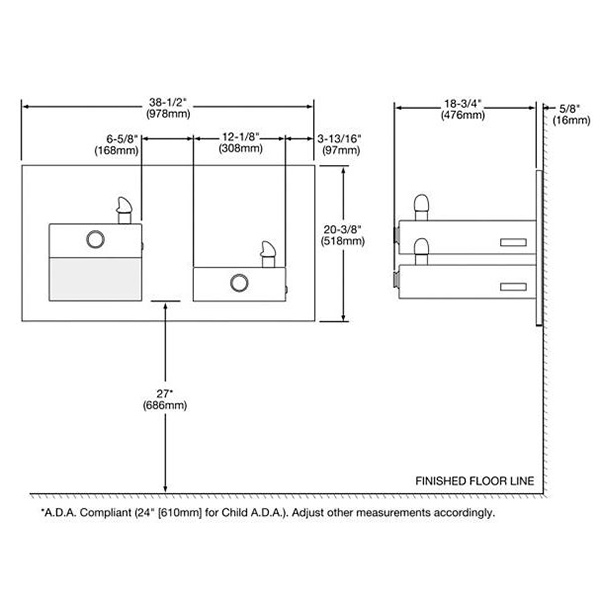
Drinking fountains are frequently identified as protruding objects when not installed within an alcove or with a cane detectable barrier extending below 27 inches to each side. Because the low fountain requires 27 inch minimum high knee and toe clearance below to accommodate a front approach, the fountain must be mounted with the bottom edge exactly 27 inches above the finished floor or a barrier must be provided 15 inches minimum from the centerline of the fountain.
However, there is no such requirement for the clearance below the high fountain. Installing an apron below the high fountain can provide a compliant cane detectable barrier. Several manufacturers, including Elkay, now provide an apron as an add-on option for the high fountain.
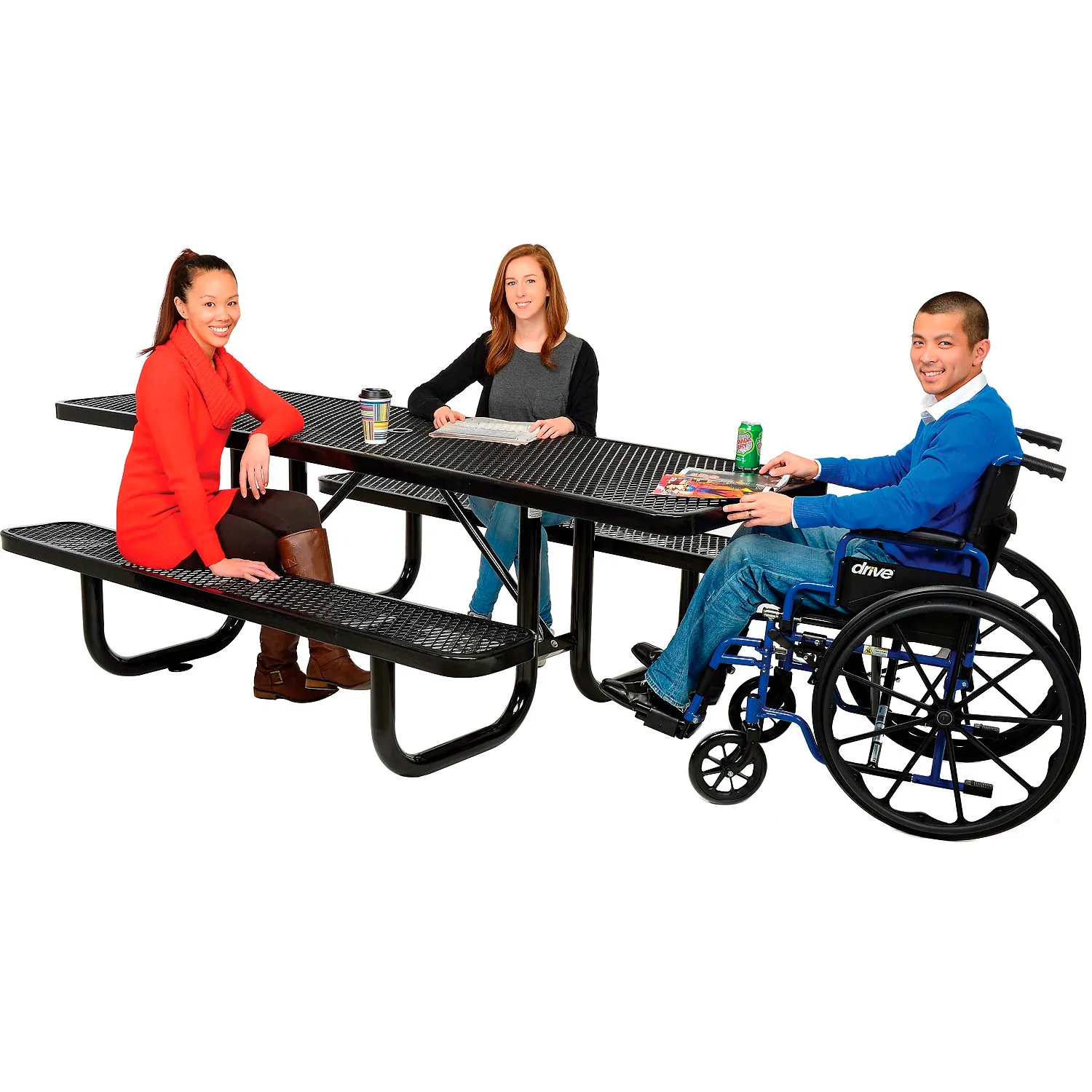
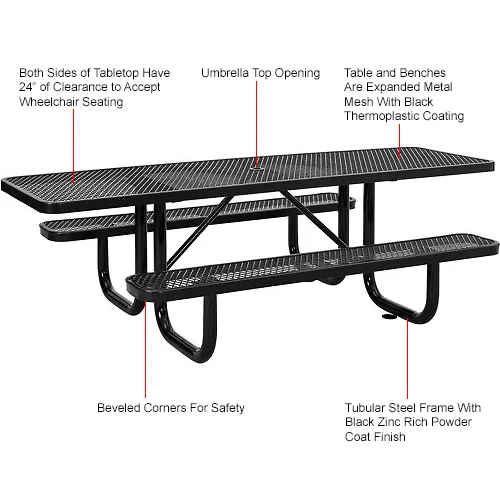
In residential and commercial applications, where outdoor dining or picnic tables are provided as an amenity serving residents, visitors, etc., a portion of those tables must provide an accessible seating space. Often, we see tables with attached bench seating, which does not provide an opportunity for someone who uses a wheelchair to utilize a front approach with knee and toe clearance below the table, as required.
One accessible option from Global Industrial provides an extended table surface with a 30 inch minimum wide clearance between the benches, accommodating an accessible seating space at the end of the table. This model also allows the installation of an umbrella at the center of the table, which does not obstruct the accessible seating.
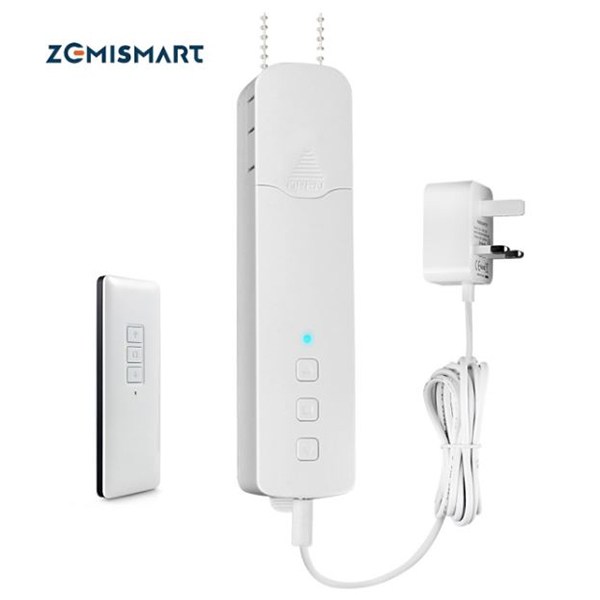
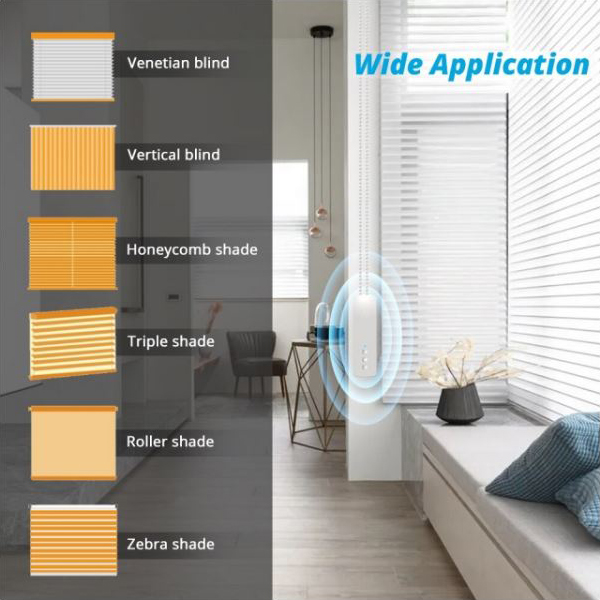
Window treatment controls are required to comply with operable parts criteria at accessible hotel rooms, medical facilities, office common-use spaces, among other uses. Motorized shade systems can be cost-prohibitive or difficult to install post-occupancy.
One option is a product like the Zemismart Roller Shade Driver, which works with standard manual shades that utilize a chain or pull cord system. The driver can be operated by pressing buttons on the device, via a remote control, or through an app, enabling the shades to be controlled from anywhere in the room.
For more examples of accessible products, check out our previous Innovations in Accessible Products post, stay tuned for additional installments, and follow us on LinkedIn for ongoing spotlights on accessible and inclusive design.
Written by Theresa D’Andrea
Steven Winter Associates